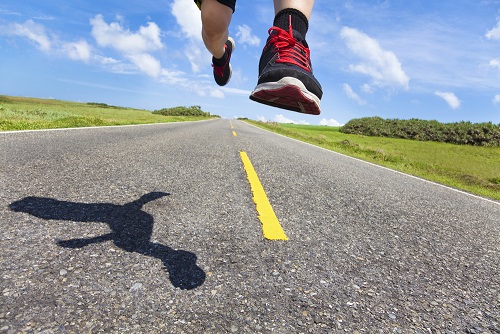Why Cross-training Should Be An Essential Part Of Your 10K Training Plan


It may sound crazy, but sometimes the best exercise to do when training for a run is not actually running. While pounding the pavement is obviously necessary, you should also be working in other exercises in order to stay well-rounded—and this is known as cross-training.
Cross-training is essential for 2 reasons. Firstly, it allows you to get in some exercise without the harsh impact that running can have on your joints. Secondly, it allows you to work your muscles in different ways and prevent the imbalances that lead to injuries. If you are planning to run a long distance like a 10K, then you need to ensure that you stay in top shape and injury-free for the length of your training programme. That is what cross-training does: it keeps your body in prime condition to ensure nothing gets in the way of your running goals.
Here are 5 excellent cross-training activities, with a little bit on why each on should be an essential part of your 10K (or any distance) training plan.
Using an elliptical machine is a great option when it comes to cross-training, because it is similar enough to running to be helpful whilst different enough to provide various training benefits. Elliptical machines generally have less impact on your joints, so they allow you to work up a sweat whilst also giving your hips and knees a little bit of a break. In addition, elliptical machines (especially those with arm levers) encourage you to engage you entire upper torso—especially your core and arms—in a way that traditional running does not.
Cycling is another low impact exercise that is great for working similar muscle groups to running, albeit in a completely different fashion. Cycling allows you to take the pressure off your ankles whilst still engaging your leg muscles and core, in addition to working out your knees. Cycling is important to prevent muscular imbalances that runners to build up, which can often lead to injury.
Cardiovascular exercise like that involved in running is great for your body, but it is even better when paired with strength or resistance training. Doing some weights will strengthen and rebalance your muscles, and help give your legs more power and stamina to sustain themselves during a long run like a 10K. You don’t need to be bench-pressing your body weight—just a little bit of resistance for your muscles here and there can really help build them up and give you an extra push.
If you think strength training isn’t for you, but you still want to give all your muscles a workout, then yoga could be exactly the right cross-training exercise for you. Yoga comes packaged as a light and gentle activity that barely warrants the label ‘exercise’, which leaves many in for a shock when they actually take a class. Yoga is hard—it is, after all, a strength exercise that requires you to flex and hold your muscles in ways they may not have stretched before. Runners have famously tight muscles, and yoga can combat this. In this way, yoga can prevent injuries and keep you on form for longer.
Swimming allows you to get a great aerobic workout at a low cost to your muscles and joints, which means it is great if you feel quite tight and need to loosen up a little. Swimming is also a good way to get a handle on your breathing, a part of running that is so often forgotten. Swimming can also be quite the social activity, and can provide a much needed break from traditional exercise whilst still keeping you in top shape.
